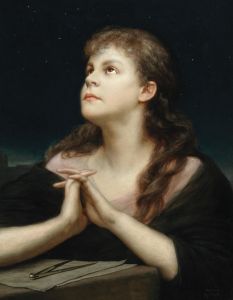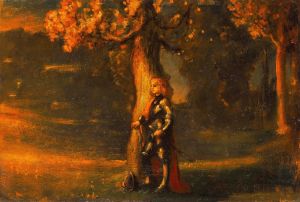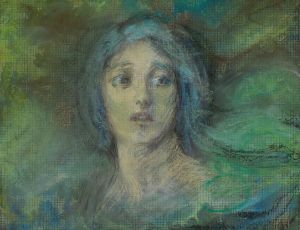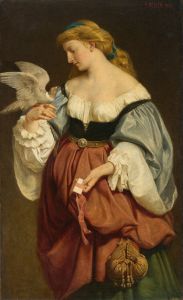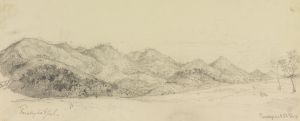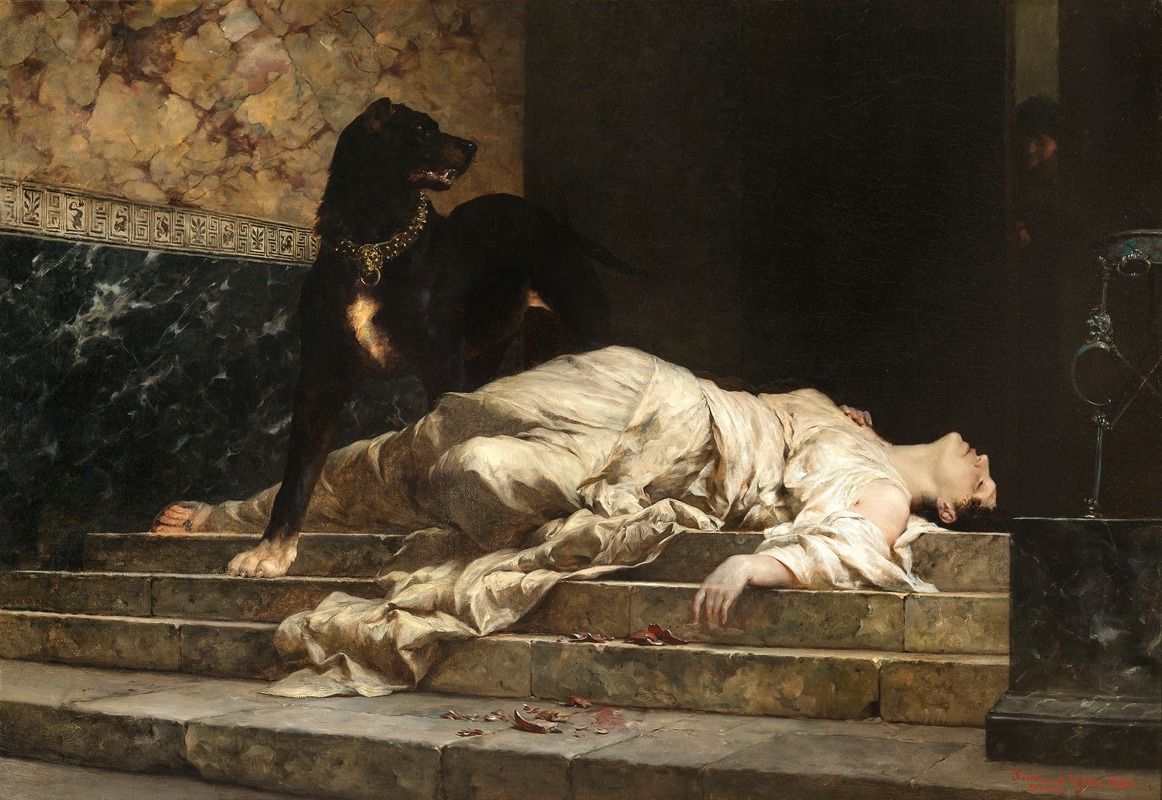
Selene
A hand-painted replica of Ferdinand Keller’s masterpiece Selene, meticulously crafted by professional artists to capture the true essence of the original. Each piece is created with museum-quality canvas and rare mineral pigments, carefully painted by experienced artists with delicate brushstrokes and rich, layered colors to perfectly recreate the texture of the original artwork. Unlike machine-printed reproductions, this hand-painted version brings the painting to life, infused with the artist’s emotions and skill in every stroke. Whether for personal collection or home decoration, it instantly elevates the artistic atmosphere of any space.
Ferdinand Keller was a German painter known for his historical and mythological subjects, as well as his portraits and landscapes. One of his notable works is "Selene," which reflects his interest in classical mythology and his skill in capturing the ethereal qualities of mythological figures.
"Selene" is a painting that depicts the Greek goddess of the moon, who was often portrayed in ancient mythology as a beautiful woman riding a chariot across the night sky. Keller's interpretation of Selene captures the serene and mystical qualities associated with the goddess. The painting is characterized by its attention to detail and the use of light and shadow to create a sense of depth and movement.
Ferdinand Keller was born on August 5, 1842, in Karlsruhe, Germany. He studied at the Academy of Fine Arts in Karlsruhe and later in Munich, where he was influenced by the works of the Old Masters as well as contemporary artists. Keller's style is often associated with the Romantic movement, which emphasized emotion, individualism, and the glorification of the past and nature.
Throughout his career, Keller was known for his ability to blend realism with romanticism, creating works that were both technically proficient and emotionally evocative. His paintings often featured rich colors and dramatic compositions, which helped to convey the grandeur and mystery of his subjects.
In "Selene," Keller likely employed these techniques to evoke the otherworldly beauty of the moon goddess. The painting would have been created during a time when there was a renewed interest in classical themes, as artists and intellectuals of the 19th century often looked to ancient Greece and Rome for inspiration. This interest was part of a broader cultural movement that sought to reconnect with the ideals and aesthetics of the classical world.
Keller's work, including "Selene," was well-received during his lifetime, and he became a prominent figure in the German art scene. He was appointed as a professor at the Academy of Fine Arts in Karlsruhe, where he influenced a new generation of artists. His contributions to art were recognized with numerous awards and honors.
While specific details about the painting "Selene" such as its current location or the exact year of its creation might not be widely documented, it remains an example of Keller's mastery in depicting mythological subjects. His ability to capture the essence of mythological figures like Selene continues to be appreciated by art historians and enthusiasts alike.
Ferdinand Keller passed away on July 8, 1922, in Baden-Baden, Germany. His legacy endures through his paintings, which continue to be studied and admired for their technical skill and imaginative portrayal of historical and mythological themes.









